Best Time to Visit Chopta 2025: Summer vs Winter Snowfall Comparison
Published on November 13, 2025
Chopta is one of Uttarakhand’s most peaceful and naturally rich destinations, surrounded by thick forests, wide meadows, and clear mountain views. Located in the Garhwal region, it serves as the gateway to the famous Tungnath and Chandrashila treks, attracting both adventure lovers and those seeking peace in the lap of the Himalayas.
Every year, travelers from across India book the Chopta tour package to experience its year-round beauty — green slopes and cool weather in summer, and snowy trails in winter. The region is home to rare Himalayan birds, crystal-clear skies, and breathtaking sunrises that make it a favorite for photographers and nature explorers alike.
For people traveling from the capital, the Chopta Tour Package from Delhi offers a perfect weekend escape from city life. With smooth road connectivity and scenic drives through Rishikesh and Ukhimath, the journey itself becomes memorable. Many travelers also combine it with the Tungnath Chandrashila Trek from Delhi, which gives them a mix of spiritual experience and high-altitude adventure. Whether it’s for trekking, camping, or simply relaxing amidst nature, Chopta remains one of the most rewarding Himalayan destinations to visit in 2025.
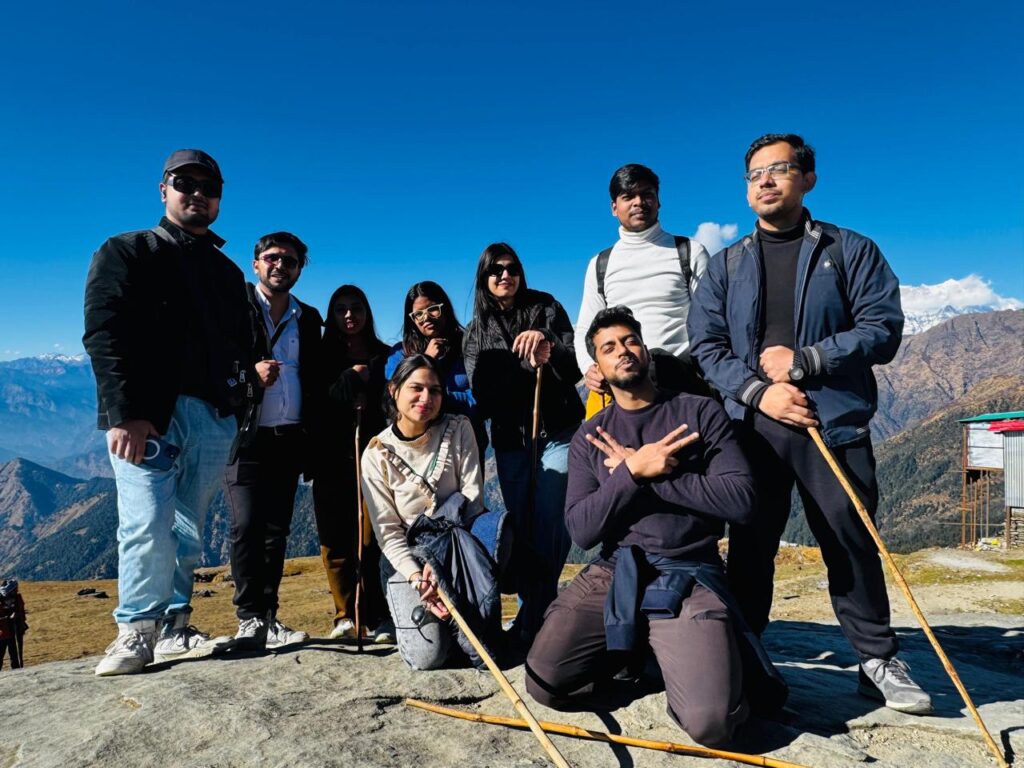
Understanding the Seasons in Chopta
Chopta experiences distinct seasons that each bring their own beauty and challenges, making it an all-year destination for travelers and trekkers. From colorful meadows in summer to snow-covered peaks in winter, every season offers a different side of the Himalayas. Understanding the weather and conditions helps travelers plan the right time for the Chopta Tungnath Trek, Tungnath Trek, or Chandrashila Trek based on their preferences and experience level.
March to June – The Pleasant Summer Season
-
Weather: Temperatures stay between 10°C and 25°C, making this period perfect for trekking and sightseeing.
-
Highlights: Meadows are green, rhododendrons bloom, and skies are crystal clear.
-
Experience: Summer is ideal for beginners attempting the Chopta Tungnath Trek as trails are dry and easy to walk on.
-
Travel Tip: Carry light woolens for cool evenings, and plan early morning starts to enjoy sunrise views from Chandrashila Peak.
Why Visit in Summer:
-
Comfortable climate for trekking and camping.
-
Clear mountain views of Nanda Devi, Trishul, and Chaukhamba.
-
Great time for bird watching and photography.
July to August – The Monsoon Magic
-
Weather: Temperatures range from 8°C to 18°C with frequent rainfall.
-
Highlights: Lush greenery covers the valleys, but roads and trails can get slippery.
-
Experience: While monsoon adds freshness to the surroundings, trekking can be challenging due to landslides and leeches.
Travel Tip:
If you visit during this time, check weather updates regularly and carry waterproof gear. Monsoon is better suited for peaceful nature stays rather than active trekking.
September to December – Autumn and Early Winter
-
Weather: Average temperature ranges from 5°C to 15°C, dropping sharply at night.
-
Highlights: Crystal-clear skies, golden forests, and snow-capped peaks in the distance.
-
Experience: One of the best times for Tungnath Trek and Chandrashila Trek as trails are open and the air is crisp.
-
Travel Tip: Ideal time for those who want a mix of adventure and pleasant weather. Carry warm layers as temperatures drop after sunset.
January to February – The Snow Season
-
Weather: Temperatures dip between -5°C and 10°C, with heavy snowfall in Chopta and Tungnath.
-
Highlights: Snow-blanketed meadows, frozen trees, and breathtaking winter views.
-
Experience: Perfect for those who love winter treks. The Chandrashila Trek during this period is magical but demands good fitness and proper gear.
Travel Tip:
Book guided treks for safety and carry snow boots, thermal wear, and gaiters. The temple may remain closed, but the trekking experience is unforgettable.
Season Comparison Table
| Season | Temperature (°C) | Trek Difficulty | Scenery & Views | Ideal For |
|---|---|---|---|---|
| March–June | 10–25 | Easy | Green meadows, clear skies | Families & beginners |
| July–August | 8–18 | Moderate–Difficult | Lush greenery, rainfall | Nature lovers |
| Sept–Dec | 5–15 | Moderate | Snow peaks, crisp air | Trekkers & photographers |
| Jan–Feb | -5–10 | Challenging | Snow trails, frozen vistas | Winter adventure seekers |
Each season in Chopta has its own rhythm — from the freshness of summer mornings to the quiet snowfall of winter nights. Whether you choose the Chopta Tungnath Trek, Tungnath Trek, or Chandrashila Trek, timing your visit right ensures an experience that’s safe, comfortable, and truly unforgettable.

Summer in Chopta (March to June) – The Green Paradise
Summer brings a new charm to Chopta — where the landscapes breathe life, trails open wide for exploration, and every step feels refreshing. For travelers planning the Chopta Tungnath Trek from Delhi, this period is a dream come true. The snow has melted by early March, revealing soft green meadows, colorful wildflowers, and distant Himalayan peaks shimmering under the bright sun.
This season offers a balanced mix of comfort and adventure. The meadows of Chopta look vibrant, surrounded by dense forests of pine and deodar, while clear skies allow trekkers to admire panoramic Himalayan views throughout the journey. It’s the ideal time to start your Tungnath Temple Trek, combining spiritual peace with outdoor thrill.
The Scenic Side of Summer
-
Forest trails turn vibrant with rhododendrons in full bloom — painting the hills in shades of red and pink.
-
Wildlife becomes more active, and spotting Himalayan birds like monal or barbets adds excitement to early morning walks.
-
Deoriatal, located en route, reflects snow-covered peaks perfectly — a treat for photography lovers.
-
Every corner of Chopta feels alive, filled with the sounds of flowing streams and chirping birds.
Perfect Season for the Tungnath Temple Trek
The Tungnath Temple Trek remains the spiritual highlight of summer. With the temple accessible after winter closure, devotees and trekkers alike hike peacefully through green valleys toward the world’s highest Shiva shrine. The route to Tungnath is moderate, making it comfortable for families, beginners, and even elderly travelers seeking divine blessings.
After visiting the temple, continuing to Chandrashila rewards trekkers with breathtaking sunrise views over the Garhwal Himalayas — a scene that defines the essence of this journey.
Why Summer is the Best Choice
-
Trails stay dry and easy to navigate — perfect for first-time trekkers.
-
Campsites near Chopta and Duggalbitta are open, offering cozy stays with local food.
-
Long daylight hours let you explore more and rest comfortably in the evenings.
-
The region is peaceful, far less crowded than typical hill stations.
Experience that Stays with You
Summer in Chopta is not just about good weather — it’s about feeling connected to nature. Whether you’re trekking to Tungnath, meditating in the open meadows, or watching the sunset from Chandrashila, the Chopta Tungnath Trek from Delhi promises an experience that blends spirituality, serenity, and scenic beauty — a perfect start to your Himalayan adventure.

Winter in Chopta (November to February) – The Snow Wonderland
Winter transforms Chopta into a mesmerizing white paradise where nature slows down, and every corner looks like a postcard from the Himalayas. During this time, the meadows, forests, and trails are covered in soft snow, offering a completely different experience from summer. Travelers taking the Chopta Chandrashila Trek from Delhi in winter often call it one of the most magical Himalayan adventures — peaceful, scenic, and unforgettable.
From November onward, the region starts receiving light snowfall, which increases by late December and continues through February. The famous Chandrashila Summit Trek becomes a snow trek during these months, attracting adventure seekers who wish to experience the thrill of walking over glistening snow under the winter sun.
The Beauty of Chopta in Winter
-
The entire Chopta valley turns white, with snow-blanketed pine forests and icy meadows reflecting sunlight like tiny crystals.
-
Early mornings reveal misty landscapes, while evenings glow under the orange hue of the setting sun.
-
Tungnath Temple, partly buried under snow, looks otherworldly — a rare and divine sight that few get to witness.
-
The air is crisp and pure, making the surroundings calm and meditative — perfect for those seeking solitude in the Himalayas.
The Winter Challenge: Chandrashila Summit Trek
The Chandrashila Summit Trek in winter is both thrilling and rewarding. The ascent to the summit, at around 13,000 feet, is covered in snow, testing endurance and determination. The path becomes steeper and slippery in parts, but the panoramic view from the top makes every step worth it. From Chandrashila, trekkers can witness majestic peaks like Nanda Devi, Trishul, Kedarnath, and Chaukhamba rising sharply against the clear blue sky.
However, the cold can be intense, with temperatures often dropping below freezing at night. Proper layering and high-quality trekking gear are essential to handle the chill effectively.
Safety & Preparation Tips for Winter Trekkers
-
Wear multiple warm layers, including thermal inners, insulated jackets, and waterproof outerwear.
-
Use sturdy trekking shoes with good grip to walk on icy sections.
-
Carry trekking poles for balance and stability.
-
Keep yourself hydrated even in cold weather — dehydration is common at high altitudes.
-
Start early to avoid trekking after sunset, as temperatures drop rapidly.
-
Always trek with a guide or a reliable organizer for safety and navigation support.
Why Winter is Worth It
Despite the cold and challenges, the Chopta Chandrashila Trek from Delhi in winter offers a once-in-a-lifetime experience. Fewer crowds, peaceful surroundings, and the sight of snow-covered Tungnath and Chandrashila make it pure bliss for true mountain lovers. It’s the perfect season for those who crave adventure, serenity, and the magic of the Himalayas — all wrapped in white.
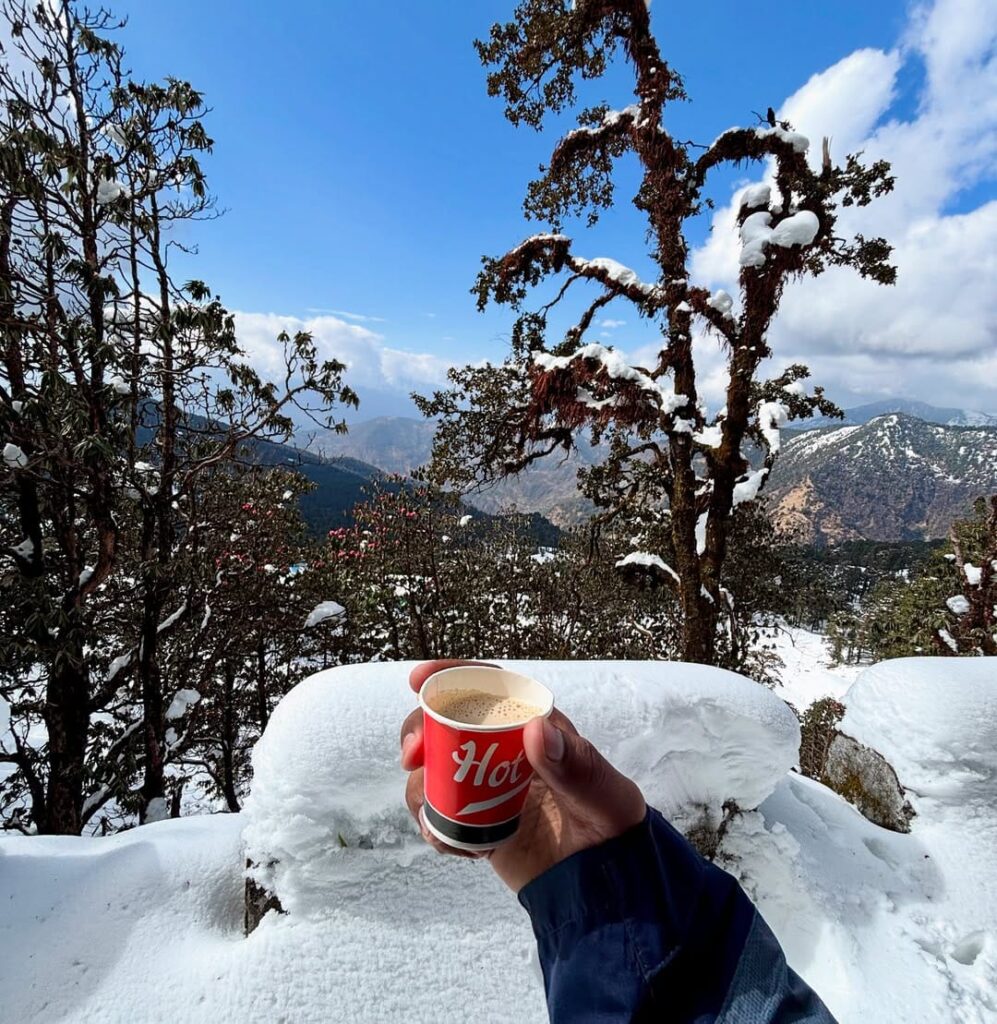
Summer vs. Winter – Detailed Snowfall & Trek Experience Comparison
Planning your Chopta Tungnath Trek or Tungnath Temple Trek in 2025? The experience changes completely between summer and winter — from green valleys filled with flowers to snow-covered ridges shining under golden sunlight. Each season offers a different mood, view, and challenge for trekkers who take on the Tungnath Chandrashila Trek.
Summer Experience: Calm, Colorful & Comfortable
From March to June, Chopta turns bright and vibrant. The meadows are covered with fresh grass and blooming rhododendrons, while the sky stays crystal clear. The path to Tungnath Temple is dry and easy, making this time perfect for families and beginners.
Trekkers on the Chopta Tungnath Trek can walk comfortably without heavy winter gear. Days are pleasant, and nights are cool enough for a campfire. You can enjoy wide views of Nanda Devi, Trishul, and Chaukhamba peaks — perfect for photography and relaxation.
Highlights of Summer:
-
Easy trekking conditions and comfortable camping weather
-
Bright wildflowers and scenic valley views
-
Best visibility for sunrise and sunset from Chandrashila Summit
-
Great for family trips and short weekend treks from Delhi
Winter Experience: Adventurous, Snowy & Rewarding
During November to February, Chopta becomes a white wonderland. The trails of the Chopta Chandrashila Trek from Delhi transform into snow paths, offering a thrilling challenge for adventure seekers. Trekkers climb through icy forests and frozen meadows to reach Tungnath Temple, which looks divine under a sheet of snow.
The Chandrashila Summit Trek in winter rewards you with crystal-clear views of snow peaks glowing orange at sunrise. The cold can be intense, so proper layers, gloves, and trekking poles are a must. While the route is tougher, the peaceful beauty of Chopta in winter makes every step worthwhile.
Highlights of Winter:
-
Snow-covered landscapes and frozen lakes
-
Challenging yet breathtaking trek routes
-
Perfect for experienced trekkers and photographers
-
Best time for snowfall lovers and winter adventure trips
Comparison Table: Summer vs. Winter Trek in Chopta
The following comparison helps you choose the best season for your Tungnath Chandrashila Trek experience.
| Feature | Summer (March–June) | Winter (November–February) |
|---|---|---|
| Weather | Pleasant, 10°C–20°C | Cold, 0°C–10°C or below |
| Scenery | Green meadows, colorful flowers | Snow-filled peaks, white forests |
| Trail Condition | Clear and dry | Snowy, requires winter gear |
| Difficulty Level | Easy to Moderate | Moderate to Challenging |
| Accessibility | Fully open roads | May face blockages after heavy snow |
| Ideal For | Families, first-timers, nature lovers | Experienced trekkers, adventure seekers |
| Views | Lush valleys and distant peaks | Sharp snow peaks and glowing sunrise |
| Gear Needed | Light layers, trekking shoes | Snow boots, gloves, insulated jackets |
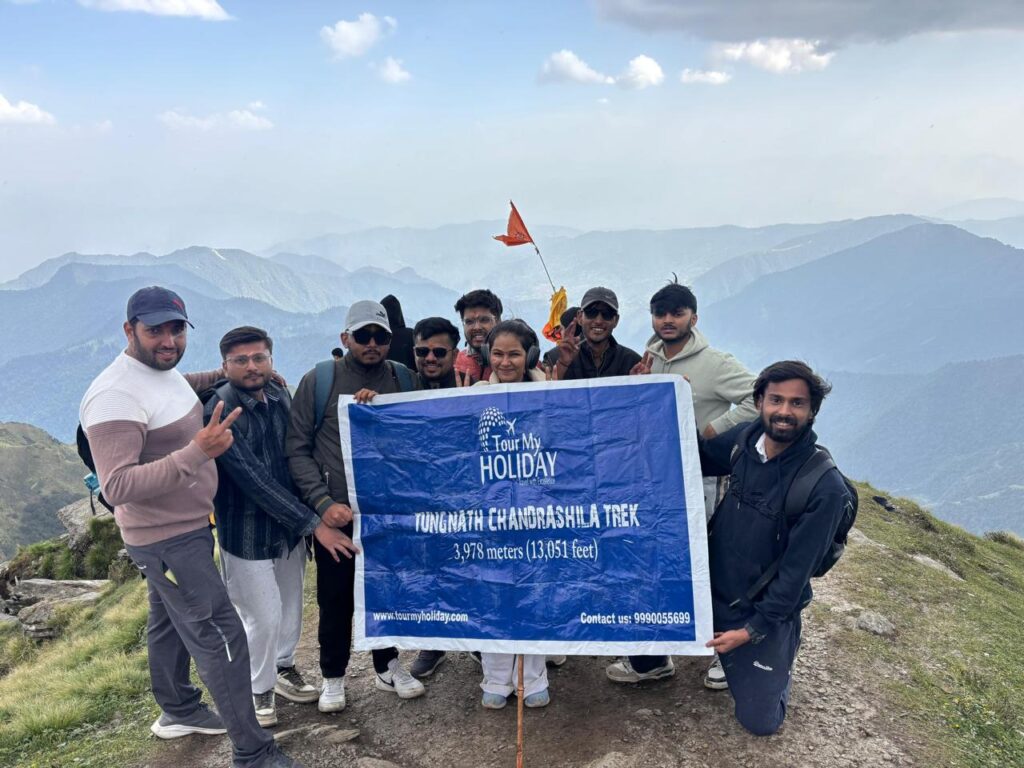
Why Choose the Chopta Tungnath Chandrashila Trek in 2025
The Chopta Tungnath Chandrashila Trek 2025 is shaping up to be one of the most sought-after Himalayan adventures of the year. With better roads, upgraded facilities, and a stronger focus on eco-friendly tourism, this trek is now more accessible and comfortable than ever. Whether you’re a beginner seeking your first mountain experience or a seasoned traveler in search of peaceful Himalayan trails, this journey offers the perfect blend of spirituality, natural beauty, and adventure.
In recent years, Chopta has seen significant improvements in infrastructure. New road routes from Rishikesh to Ukhimath and Chopta have made travel smoother, while reliable camping facilities now provide a more organized trekking experience. These developments ensure that trekkers can focus on enjoying the scenery — from misty pine forests to snow-kissed peaks — without worrying about logistics or comfort.
Why 2025 is the Ideal Year for the Chopta Trek
Here’s what makes 2025 special for trekkers planning their Himalayan escape:
-
Upgraded Camps & Eco-Stays: Many local operators have built sustainable camping areas equipped with clean washrooms, solar lighting, and proper waste management systems.
-
Improved Road Connectivity: The route from Delhi and Rishikesh to Chopta is better maintained, reducing travel time and ensuring smoother journeys.
-
Sustainable Travel Practices: 2025 marks a major push for responsible tourism — reduced plastic usage, eco-friendly cooking methods, and community-based travel experiences.
-
Local Guide Support: Trained guides from nearby villages ensure authentic travel experiences while helping preserve local traditions and ecology.
-
Enhanced Trek Safety: Marked trails, improved communication networks, and organized trek routes make the Chopta Tungnath Trek 2025 safe for families and solo travelers alike.
Spiritual Calm Meets Adventure
The trek combines the spiritual energy of Tungnath Temple with the thrill of reaching Chandrashila Peak, offering trekkers both peace and excitement. The Tungnath Chandrashila Trek from Delhi provides a quick yet fulfilling Himalayan experience, where you can meditate at the temple in the morning and climb to witness a breathtaking sunrise over Nanda Devi and Trishul by afternoon.
Book Early for the Best Experience
Since Chopta has limited accommodation, especially during peak seasons (April–June and October–December), travelers are encouraged to book their Chopta Tour Package in advance. Early bookings not only ensure better stays and experienced guides but also allow for flexible itinerary customization.
Choosing the Chopta Tungnath Chandrashila Trek 2025 means embracing the Himalayas in their purest form — peaceful forests, sacred shrines, and awe-inspiring mountain views. It’s more than just a trek; it’s an experience that blends faith, adventure, and sustainability into one unforgettable journey.

Ideal Season for Different Travelers
Chopta isn’t just a destination — it’s an experience that changes with every season. Whether you’re traveling with family, seeking adventure, or embarking on a spiritual journey, each time of year offers something special. Choosing the right season for your Tungnath Trek, Tungnath Temple Trek, or Chandrashila Trek makes all the difference in how you experience the Himalayas.
For Families & Beginners – March to June
If you’re planning a relaxed and comfortable holiday, the summer months are ideal. The trails are clear, the weather stays between 10°C to 20°C, and meadows are covered in wildflowers.
-
Best time for easy treks and short walks.
-
Comfortable stays available with warm hospitality.
-
Ideal for kids and first-time trekkers due to low altitude challenges.
-
Clear views of Himalayan peaks make it perfect for photography and picnics.
TourMyHoliday offers customized Chopta family packages with safe drives, guided walks, and cozy stays to ensure a memorable summer escape.
For Adventure Seekers – November to February
Winter transforms Chopta into a snowy wonderland, perfect for those who love thrill and solitude.
-
Snow-clad trails add a moderate challenge, especially on the Chandrashila Trek.
-
Fewer tourists mean peaceful trails and pure mountain silence.
-
Carry proper gear for sub-zero nights and icy routes.
If you dream of walking through snow and witnessing the Himalayas glowing at sunrise, winter is your best season. TourMyHoliday winter adventure packages include guides, snow gear assistance, and safe lodging.
For Pilgrims & Spiritual Travelers – April to October
From April onwards, the route to Tungnath Temple opens, welcoming thousands of devotees.
-
Roads are clear, and temple access remains open till early November.
-
Trekking to the world’s highest Shiva temple offers deep spiritual energy and divine peace.
-
Combine your temple visit with the Chandrashila Trek for panoramic views.
Pilgrims often prefer this time for spiritual treks with light adventure — a perfect blend of faith and nature.
Final Note:
No matter the season, the Tungnath Trek and Chandrashila Trek offer unforgettable moments. Whether it’s the calm of summer or the thrill of winter, TourMyHoliday ensures every traveler finds their ideal Chopta experience with safety, comfort, and expert local guidance.
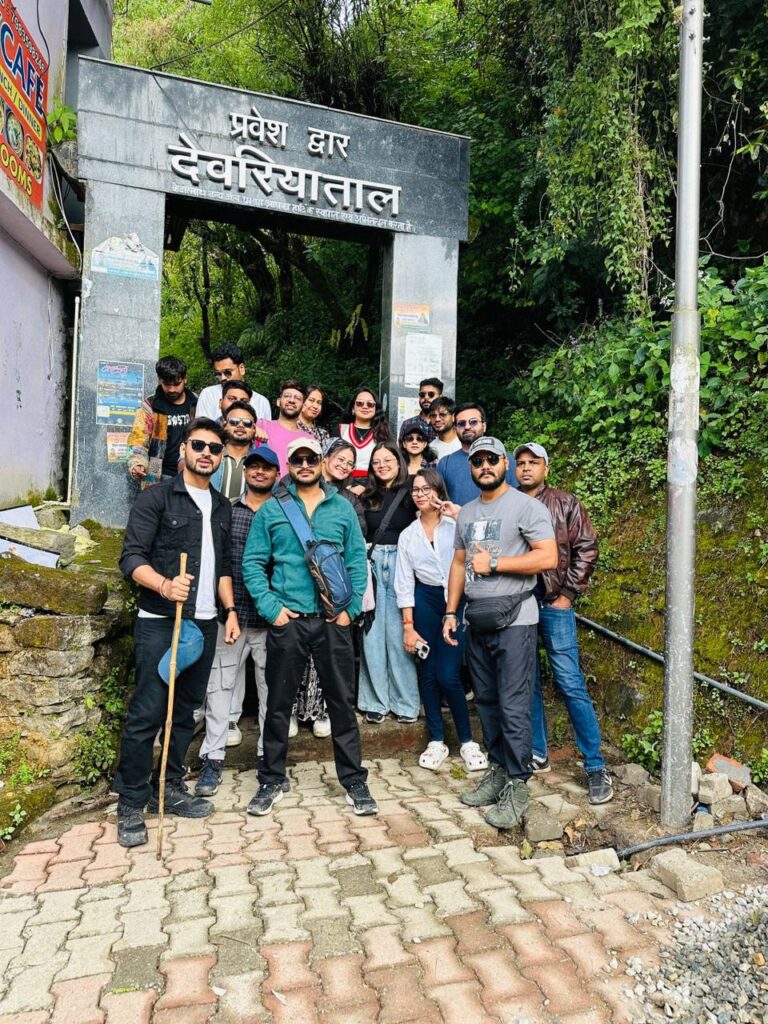
Travel Tips for the Perfect Chopta Tour
Planning a Chopta Tour Package from Delhi requires a bit of preparation, especially since the region’s weather and terrain can vary drastically through the year. Whether you’re joining a Chopta Tungnath Trek from Delhi or a peaceful nature escape, these travel tips will help you enjoy a comfortable and well-prepared journey.
Plan Your Route & Travel Comfortably
When you book a Chopta Tour Package from Delhi, most operators provide private or shared transport via Rishikesh and Ukhimath. This ensures a smooth journey through mountain roads without the stress of changing multiple buses.
-
Choose an early morning departure from Delhi for relaxed travel.
-
Keep motion-sickness medicine if you’re sensitive to winding hill roads.
-
Opt for local drivers familiar with Uttarakhand terrain — they know the best food stops and safe routes.
Pack Smart – Essentials for Every Traveler
Proper packing can make your trek and stay far more enjoyable. The weather in Chopta can shift quickly, so be ready for sun, rain, or sudden chill.
Checklist for your Chopta adventure:
-
Trekking shoes: Lightweight, with good grip for rocky or snowy trails.
-
Thermal layers: Vital for cold mornings and evenings.
-
Rain jacket or poncho: Sudden mountain showers are common.
-
Water bottle or hydration pack: Stay hydrated during long walks.
-
Woolen cap and gloves: Essential in early mornings or winter months.
-
Torch/headlamp: Electricity can be limited in remote areas.
-
Personal first-aid kit: Carry pain relief spray, band-aids, and altitude-safe medicine.
Stay & Trek Planning
Booking a Chopta Tungnath Trek from Delhi through a trusted travel agency ensures everything — from stay to guide — is pre-arranged.
-
Budget and premium stays are available in Chopta, depending on your preference.
-
A local guide not only ensures safety on the trail but also shares cultural stories and trekking insights.
-
Carry some cash, as ATMs may not be reliable in higher regions.
Pro Tips for a Smooth Experience
-
Avoid heavy luggage; pack only what’s necessary.
-
Keep power banks and backup batteries for phones and cameras.
-
Respect local traditions, especially around temples like Tungnath.
-
Don’t litter — practice eco-friendly trekking.
Final Thought:
With the right preparation, the Chopta Tour Package from Delhi becomes a perfect blend of comfort and adventure. A little planning ensures you experience the raw Himalayan charm of Chopta, the serenity of Tungnath, and the breathtaking summit views of Chandrashila — all without a single worry.
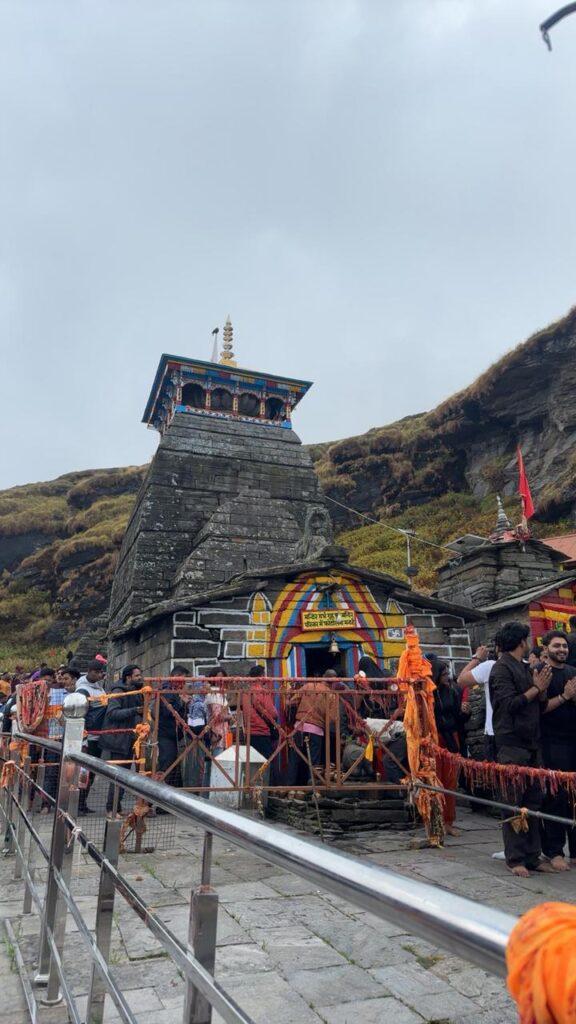
Conclusion – Choose Your Season, the Himalayas Await
The Chopta Tungnath Trek offers something truly special no matter when you visit. Each season transforms the landscape in its own way, giving travelers the chance to experience both peace and adventure in the heart of the Himalayas. Whether you’re drawn to the colorful trails of summer or the snow-kissed charm of winter, Chopta promises memories that stay for a lifetime.
Summer – A Season of Life and Color
During summer, the valleys of Chopta bloom with wildflowers and rhododendrons, painting the hills in bright shades of red and pink. The trails leading to Tungnath and Chandrashila are clear, making it easy for beginners and families to enjoy the journey. You can walk through soft meadows, breathe in the crisp mountain air, and enjoy clear views of the mighty Himalayan peaks.
-
Ideal for: Families, beginners, and nature photographers
-
Best experience: Sunrise from Chandrashila Summit with clear skies
-
Highlights: Comfortable weather, easy trails, vibrant greenery
Winter – A Wonderland of Snow and Serenity
When winter sets in, Chopta turns into a completely different world. Snow blankets the forest, and the Tungnath Chandrashila Trek becomes an adventure filled with quiet beauty. The temple of Lord Shiva at Tungnath glows against the white landscape, offering a feeling of deep peace and divinity. The trek to Chandrashila during this time is slightly challenging, but the reward is beyond words — endless Himalayan views shining under the winter sun.
-
Ideal for: Adventure seekers, experienced trekkers, and snow lovers
-
Best experience: Chandrashila sunrise with snow peaks glowing golden
-
Highlights: Snow trails, spiritual calm, peaceful surroundings
Why Every Season is Worth Experiencing
No matter which time you choose — the freshness of summer or the stillness of winter — Chopta delivers an experience that balances nature, spirituality, and adventure.
-
Summer invites you to relax and explore with ease.
-
Winter tests your spirit and rewards you with silence and beauty.
-
Both lead you to Tungnath, the world’s highest Shiva temple, and to Chandrashila, the peak that offers a panoramic view of heaven itself.
Final Thought:
The Himalayas are waiting — choose your season, pack your bag, and let the Chopta Tungnath Trek guide you through a journey where every sunrise feels like a blessing. The Tungnath Chandrashila Trek isn’t just a route; it’s an experience that connects you deeply with the spirit of the mountains.
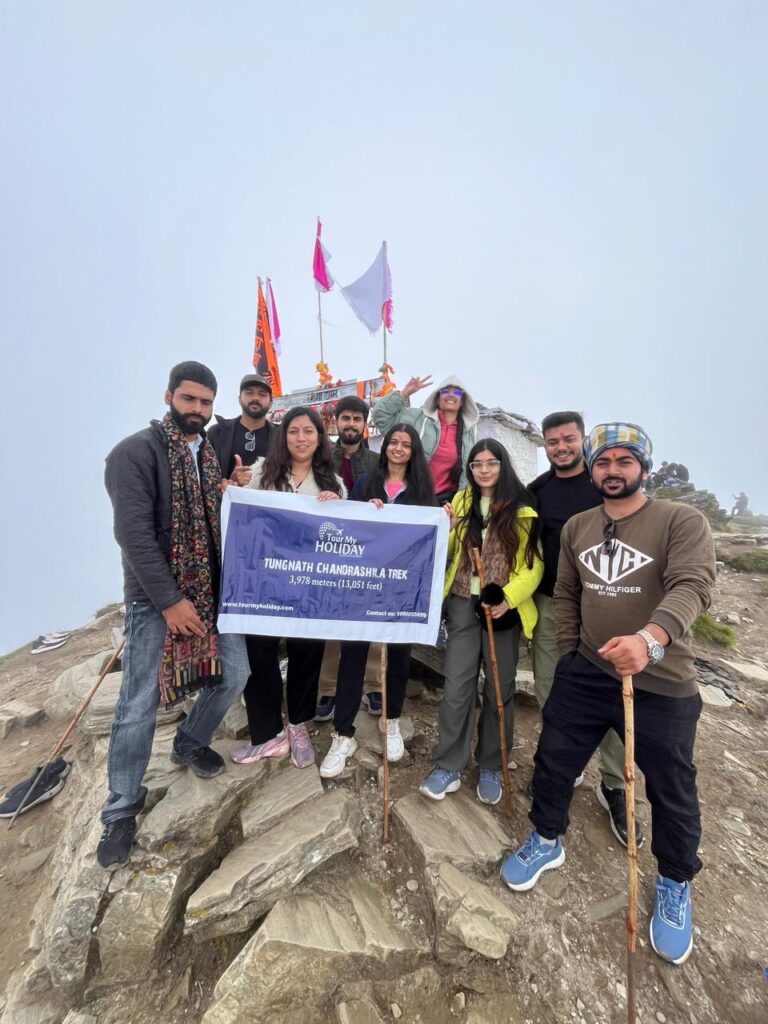
Frequently asked questions
1. What is the total distance of the Tungnath–Chandrashila trek from Chopta?
The total trekking distance from Chopta to Chandrashila Summit via Tungnath is around 5 km one way. It takes about 3–4 hours to reach the top, depending on fitness and weather. The first 3.5 km covers the Tungnath Temple Trek, and the remaining 1.5 km is a steep ascent to Chandrashila Peak offering breathtaking Himalayan views.
2. How difficult is the Chopta Tungnath Chandrashila Trek?
This trek is rated as easy to moderate, making it perfect for both beginners and seasoned trekkers. The trail is well-marked and doesn’t require technical climbing. However, during winter months, snow on the path can increase difficulty slightly, so wearing proper trekking shoes and using walking poles is advised.
3. What is the best time to do the Chopta Tungnath Chandrashila Trek?
The best time for this trek is March to June (pleasant weather, clear trails) and September to December (snow views and crisp air). If you wish to experience snowfall, plan your Chopta Tour Package between December and February. The temple usually opens in April and closes by November.
4. Is the Tungnath Temple Trek safe for beginners and families?
Yes, the Tungnath Temple Trek is quite safe for families and first-time trekkers. The route is well-paved with gradual inclines. Local guides and ponies are also available for support. Families from Delhi and nearby cities often choose the Chopta Tour Package from Delhi for a comfortable guided experience.
5. What gear should I carry for the Chandrashila Trek, especially in winter?
Winter trekkers should carry:
-
Sturdy waterproof trekking shoes
-
Thermal layers and windproof jackets
-
Gloves, mufflers, and woolen caps
-
Trekking poles for better balance on snow
-
Sunscreen, sunglasses, and reusable water bottle
-
Basic medicines for altitude and cold
6. Is the Tungnath Temple open all year round?
No, the Tungnath Temple remains closed during winter (November to April) due to heavy snowfall. During this time, the deity is moved to Mukunath for worship. However, trekkers can still visit the temple area and the Chandrashila Summit Trek, though the shrine remains shut.
7. Do I need a permit for the Chopta–Tungnath–Chandrashila trek?
Currently, no special permit is required for the Chopta Tungnath Chandrashila Trek. However, if you include Deoriatal or Kedarnath Wildlife Sanctuary in your itinerary, you may need a small entry ticket, which is usually managed by your tour package provider or guide.
8. Can I include Deoriatal Lake in my Chopta trek itinerary?
Yes, absolutely. Many travelers prefer a Deoriatal–Chopta–Tungnath–Chandrashila Combo Trek. It starts from Sari Village with a short 2.3 km hike to Deoriatal Lake, followed by Chopta and Tungnath over the next two days. This combination adds scenic beauty and adventure to your Chopta Tour Package.
9. What kind of accommodation and food options are available in Chopta?
Chopta offers various stay options — from budget guesthouses and homestays to comfortable campsites. Hot vegetarian meals (dal, rice, chapati, vegetables) are served at most stays. If you book a Chopta Tour Package from Delhi, your meals, accommodation, and travel are usually included for a hassle-free experience.
10. Is mobile network and internet available in Chopta?
Mobile connectivity in Chopta is limited but functional for Jio and BSNL users. Network may fade during higher altitudes like Tungnath and Chandrashila. It’s recommended to inform your family before starting the trek and keep essential contacts written down for emergencies.



